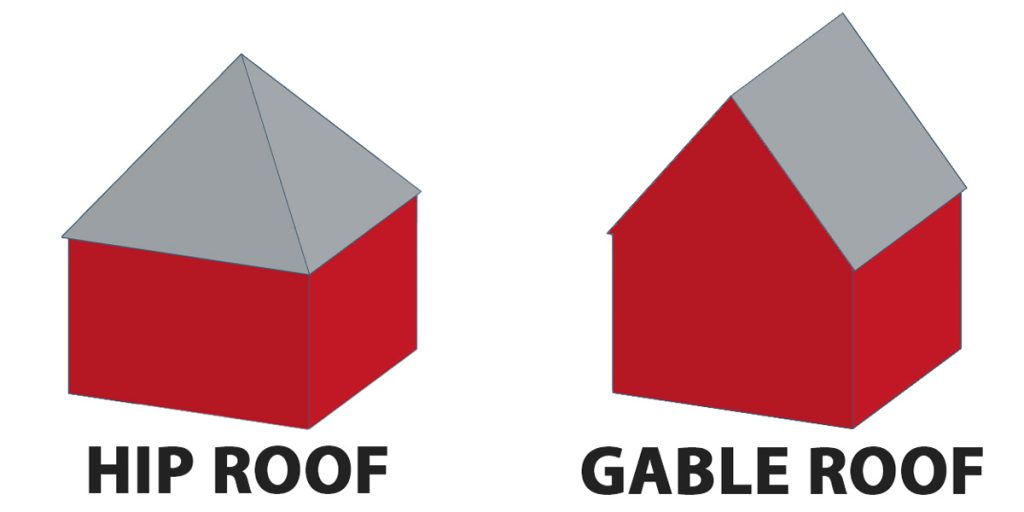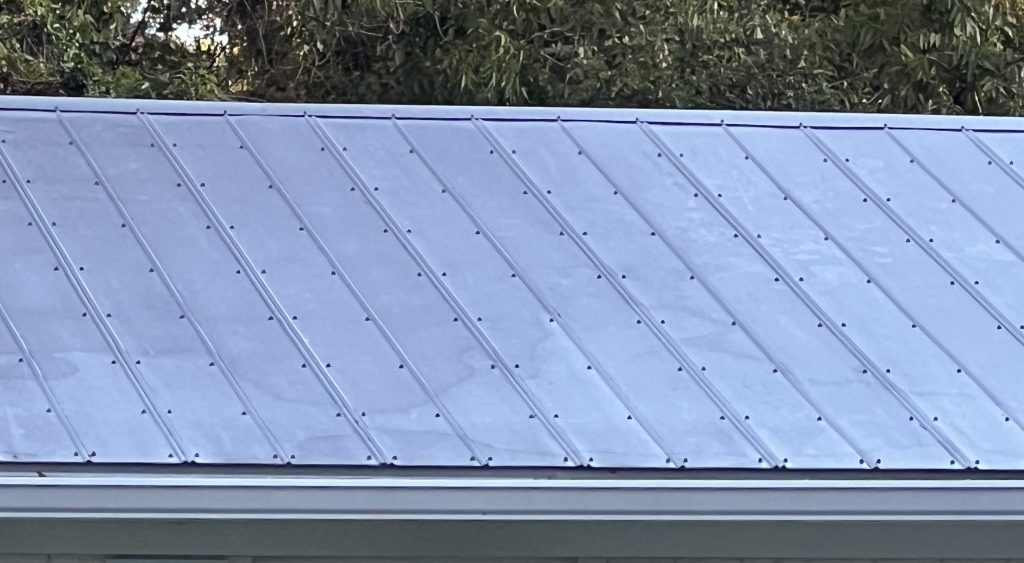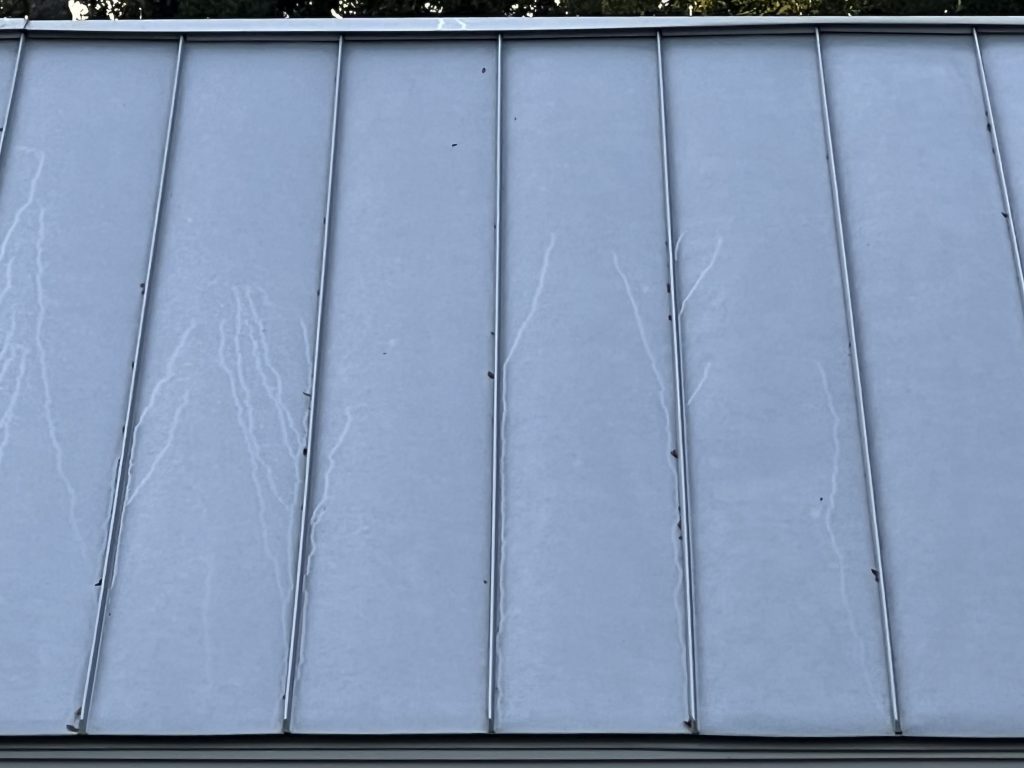Questions about the shape of a roof as well as what kind of metal roof often arise, so we want to provide some images to help clarify.
Roof Shape
A gable roof and a hip roof are two common roof types with distinct shapes and characteristics. While flat roofs are also found, that should not need an illustration to understand, we hope. Some roofs can be a combination as well, but for here, we want to review the two most common roof shapes:
Gable Roof:
- Shape: A gable roof has two sloping sides that meet at a ridge, forming a triangular shape at each end. These triangular sections are called “gables.”
- Design: The roof has two flat sections that slope away from each other, creating the classic triangle profile when viewed from the side.
- Advantages:
- Easier and cheaper to construct due to simpler design.
- Sheds water and snow efficiently due to steep slopes.
- Disadvantages:
- More vulnerable to high winds. The gable ends can catch wind like a sail, making the structure susceptible to wind damage.
Hip Roof:
- Shape: A hip roof has four sloping sides, all of which meet at the top to form a ridge or a single peak. There are no vertical sides (gables).
- Design: The slopes of a hip roof are uniform, and the roof slopes down to the walls on all four sides.
- Advantages:
- More stable and sturdy, especially in windy or storm-prone areas, as the sloped sides deflect wind more effectively.
- Better overall durability compared to gable roofs.
- Disadvantages:
- More complex and expensive to build due to the additional structural support and design elements.
Here is an image that helps show the two styles:

Different Metal Roofing Material
Shingle and slate roofs are common, as are metal roofs, but there is an important difference between two of the main metal roof types – 5V and Standing Seam.
Standing Seam
Standing seam metal roofs are known for their clean, modern look and highly durable construction. The name “standing seam” comes from the design of the panels, which have raised seams or vertical ribs that run continuously from the roof’s ridge to the eaves.
Features of Standing Seam Roofing:
- Vertical Seams: The panels are fastened with raised seams that stand above the flat part of the roof. These seams are the key feature of this roofing style.
- Concealed Fasteners: One of the major benefits of a standing seam roof is that the fasteners are hidden, offering a sleeker appearance and reducing the risk of leaks over time.
- Durability: Because of its strong, interlocking design and concealed fasteners, standing seam roofing is extremely durable and long-lasting.
5V Crimp Metal Roof
The 5V crimp metal roof is a classic style that has been used for decades, particularly in rural and agricultural settings. The “5V” refers to the five V-shaped ridges that run along the width of each metal panel, providing both structural integrity and visual appeal.
Features of 5V Crimp Roofing:
- Distinctive V-Shaped Ridges: The panels are designed with five V-shaped crimps that help strengthen the material and allow for better water runoff.
- Exposed Fasteners: Unlike standing seam roofs, 5V crimp roofs use exposed fasteners that are visible on the surface of the roof and drilled through the metal and roof decking to hold the metal onto the roof.
- Durability?: Because of the exposed fasteners drilled through the metal, the 5V crimp roof requires those fasteners be replaced from time to time (ask a qualified roofer for this timing) in order to maintain the integrity of the roof and prevent water intrusion.
Because of the nuance difference between these two, pictures below are better to illustrate the difference:

5V Roof – rows of visible screws

Standing Seam – no visible screws
